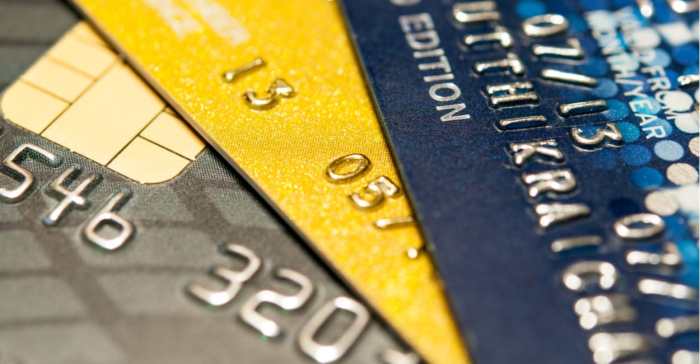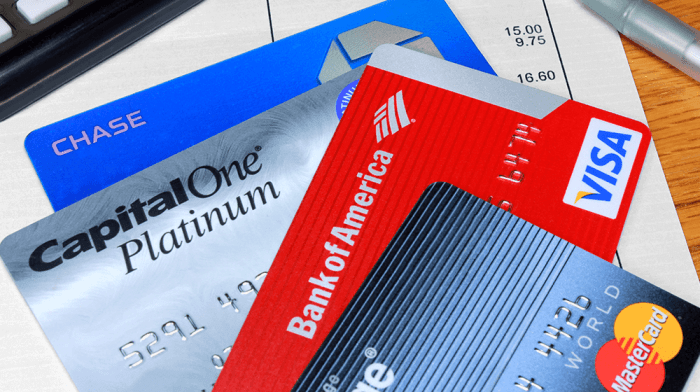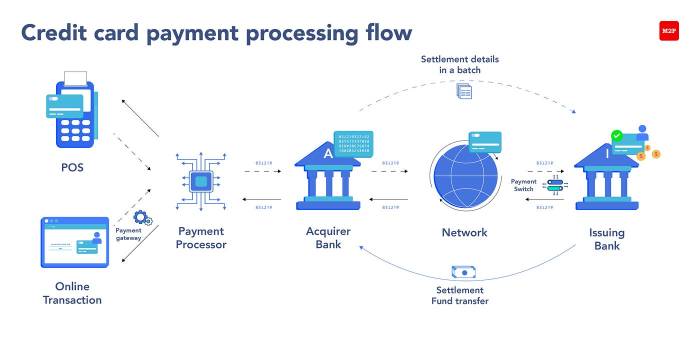How to Get a Credit Card with Excellent Credit Score
How to get a credit card with excellent credit score is a question many with strong financial standing ask. Securing a premium credit card offers significant advantages, from lucrative rewards programs to exclusive perks. Understanding your credit score, the application process, and responsible card management are crucial steps in this journey. This guide will equip you with the knowledge and strategies to navigate the process successfully and choose the card that best aligns with your financial goals.
This comprehensive guide delves into the intricacies of obtaining a premium credit card when you possess an excellent credit score. We’ll explore the various types of cards available, the application process, and crucial strategies for maximizing benefits while mitigating potential risks. By understanding the factors influencing creditworthiness and making informed decisions, you can unlock the numerous advantages that come with possessing a premium credit card.
Types of Credit Cards for Excellent Credit
Having excellent credit opens doors to a world of premium credit cards offering substantial rewards and benefits. These cards are designed for individuals with a proven track record of responsible credit management, and they often come with higher annual fees reflecting their enhanced features. Understanding the various types available and their associated perks and drawbacks is crucial for choosing the card that best aligns with your financial goals.
Premium Credit Card Categories and Their Characteristics, How to get a credit card with excellent credit score
Premium credit cards generally fall into several categories, each emphasizing different reward structures and benefits. The most common types include travel rewards cards, cash-back cards, and low-interest cards. Each offers unique advantages and disadvantages that should be carefully weighed against individual spending habits and financial priorities. Travel rewards cards, for instance, are ideal for frequent travelers, while cash-back cards provide straightforward value for everyday purchases.
Low-interest cards, on the other hand, are beneficial for those carrying balances and seeking to minimize interest charges.
Comparison of Three Premium Credit Cards
Choosing the right premium card requires careful consideration of several key factors. The following comparison highlights the differences between three popular premium cards, illustrating the range of options available to consumers with excellent credit. It is important to remember that specific terms and conditions, including interest rates and rewards programs, are subject to change. This comparison should be used as a starting point for your own research.
- Card A: The Platinum Card® from American Express: This card is renowned for its extensive travel benefits, including access to airport lounges, travel insurance, and substantial travel credits. However, it comes with a hefty annual fee.
- Annual Fee: High (typically around $695)
- Rewards Program: Extensive travel benefits, including statement credits, airport lounge access, and travel insurance.
- Interest Rate: Variable, typically high.
- Card B: Chase Sapphire Reserve®: This card also offers excellent travel rewards, but focuses more on a points-based system that can be redeemed for travel through Chase’s Ultimate Rewards portal. It also boasts a significant annual fee.
- Annual Fee: High (currently $550)
- Rewards Program: Points-based system redeemable for travel and other purchases through Chase Ultimate Rewards.
- Interest Rate: Variable, typically high.
- Card C: Capital One Venture X Rewards Credit Card: This card provides a strong balance between travel rewards and a more manageable annual fee than the previous two examples.
- Annual Fee: Moderate (currently $395)
- Rewards Program: Points-based system redeemable for travel, with a focus on flexibility and ease of redemption.
- Interest Rate: Variable, typically high.
Application Process and Required Documentation

Securing a premium credit card with an excellent credit score is generally a straightforward process, but understanding the steps involved and the necessary documentation will significantly increase your chances of approval. This section Artikels the typical application procedure and highlights crucial aspects to ensure a smooth experience.The application process for premium credit cards typically involves several key steps, from initial application to final approval or rejection.
Understanding these steps allows applicants to prepare adequately and increase their chances of success. Furthermore, knowing what documentation is required minimizes delays and ensures a timely response from the credit card issuer.
Application Steps
Applying for a premium credit card usually begins online through the issuer’s website. However, some institutions may offer in-person applications at branches. Regardless of the method, applicants will need to provide accurate and complete information to ensure a smooth process. Inaccurate or incomplete information can lead to delays or rejection.
- Online Application: Most applications are completed online, requiring you to fill out a form with personal details, employment history, and income information.
- Review and Verification: The credit card issuer will review your application and verify the information you provided, often by checking your credit report with one or more credit bureaus.
- Credit Check: A hard inquiry will be made on your credit report. This inquiry will temporarily lower your credit score slightly, but this impact is usually minimal, especially for those with excellent credit.
- Approval or Denial: Based on the review and credit check, the issuer will either approve or deny your application. Approval usually results in an immediate or near-immediate issuance of the card, while denial often includes an explanation of the reasons.
- Card Activation and Delivery: Once approved, you’ll need to activate your new card, often through a phone call or online portal. The physical card will then be mailed to your address.
Required Documentation
The specific documents required can vary depending on the issuer and the type of card. However, some common documents are almost always requested. Providing these documents promptly can expedite the approval process. Failure to provide the necessary documents can lead to delays or rejection of the application.
- Government-Issued Identification: A driver’s license or passport is usually required to verify your identity.
- Proof of Income: Pay stubs, tax returns, or bank statements are typically needed to demonstrate your income and financial stability. This helps the issuer assess your ability to repay the credit card debt.
- Proof of Address: Utility bills, bank statements, or rental agreements can be used to verify your current residential address.
- Social Security Number (SSN): This is essential for the credit check and verification process.
Reasons for Application Rejection
Even with excellent credit, there are reasons why your application for a premium credit card might be rejected. Understanding these potential reasons can help you address them proactively in future applications. While excellent credit significantly increases your chances of approval, it doesn’t guarantee it.
- Recent Credit Inquiries: Too many hard inquiries in a short period can raise concerns about your financial stability.
- High Credit Utilization: While your credit score is excellent, using a large percentage of your available credit can still negatively impact your approval chances.
- Insufficient Income: Even with excellent credit, if your income doesn’t meet the issuer’s minimum requirements for the specific card, your application may be rejected.
- Inconsistent Information: Discrepancies in the information provided during the application process can lead to rejection. Accuracy is paramount.
- Negative Information on Credit Report: While unlikely with excellent credit, any overlooked negative information, such as a missed payment from years ago, could still impact the decision.
Maximizing Benefits and Avoiding Pitfalls

Having secured a premium credit card, the next crucial step is leveraging its advantages responsibly while mitigating potential risks. Understanding how to manage your card effectively will not only enhance your financial well-being but also safeguard your excellent credit score. This involves careful spending habits, proactive monitoring, and a clear understanding of the card’s terms and conditions.Understanding the potential downsides of premium credit cards is equally important.
While they offer numerous perks, these often come with substantial annual fees and potentially high interest rates. Ignoring these costs can quickly negate any rewards earned. Furthermore, the temptation to overspend due to higher credit limits is a significant pitfall.
Responsible Credit Card Usage for Maintaining a High Credit Score
Responsible credit card usage is paramount for preserving a high credit score. This hinges on consistent on-time payments, keeping your credit utilization low (ideally below 30% of your total credit limit), and maintaining a diverse credit history. By consistently demonstrating responsible financial behavior, you solidify your strong credit standing and benefit from lower interest rates and better loan terms in the future.
For example, setting up automatic payments eliminates the risk of late payments, a major credit score detriment. Similarly, regularly checking your credit report and score allows for early detection and resolution of any inaccuracies or issues.
Potential Risks Associated with Premium Credit Cards
Premium credit cards, while offering attractive benefits such as travel rewards, concierge services, and purchase protection, often carry significant annual fees. These fees can range from a few hundred to several thousand dollars annually. Furthermore, the interest rates on premium cards can be higher than those on standard cards, making it crucial to pay your balance in full each month.
Failure to do so can result in substantial interest charges, negating the benefits of the card and potentially damaging your credit score. For instance, a card with a $500 annual fee and a 20% interest rate can quickly become a financial burden if not managed carefully.
Avoiding Common Credit Card Pitfalls
Overspending is a common pitfall, particularly with premium cards that offer high credit limits. Creating and sticking to a budget, tracking expenses meticulously, and setting realistic spending goals are crucial for avoiding this. Late payments, even a single one, can severely impact your credit score. Setting up automatic payments or reminders is a simple yet effective way to prevent this.
Ignoring the fine print and failing to understand the terms and conditions of your credit card agreement can also lead to unexpected fees and charges. Carefully reviewing the agreement before using the card is essential.
Best Practices for Managing Premium Credit Cards Effectively
- Pay your balance in full and on time each month: This prevents interest charges and protects your credit score.
- Keep your credit utilization low: Aim to keep your credit utilization below 30% of your total credit limit.
- Monitor your credit report regularly: Check for errors and ensure your information is accurate.
- Set up automatic payments: This eliminates the risk of late payments.
- Understand your card’s terms and conditions: Be aware of annual fees, interest rates, and other charges.
- Budget carefully: Track your spending and avoid overspending.
- Take advantage of rewards programs: Maximize the benefits of your card by utilizing its rewards features responsibly.
Comparing Offers and Choosing the Right Card
Choosing the right premium credit card from a plethora of available options requires careful consideration of your individual financial goals and spending habits. This involves comparing various offers based on key features and understanding which card best aligns with your lifestyle. A systematic approach will ensure you select a card that maximizes benefits and minimizes potential drawbacks.
Key Factors in Premium Credit Card Comparison
Comparing premium credit cards necessitates a focus on several crucial aspects. Ignoring even one could lead to a less-than-optimal choice. These factors should be weighed against your personal financial situation and spending patterns. For example, a card with a high annual fee might be worthwhile if you consistently utilize its benefits, but not if you rarely travel or spend significantly.
- Annual Fee: Premium cards often come with substantial annual fees. Assess whether the rewards and benefits outweigh the cost. A card with a $500 annual fee might be justifiable for a frequent international traveler who can leverage travel credits and lounge access, but not for someone who primarily uses the card for everyday purchases.
- Interest Rate (APR): Even with excellent credit, you should compare APRs. While you ideally won’t carry a balance, understanding the interest rate is crucial in case of unexpected expenses or delays in payment. A lower APR provides more financial flexibility.
- Rewards Program: Premium cards offer various rewards programs, including cash back, points, or miles. Determine which program aligns best with your spending habits. A card offering high cash back on groceries might be ideal for a family, while a travel rewards card is better suited for frequent flyers.
- Benefits and Perks: Consider additional benefits such as travel insurance, purchase protection, concierge services, and airport lounge access. These features add value and can significantly enhance your travel or shopping experiences. Evaluate which benefits are most valuable to you personally.
Scenarios and Suitable Premium Card Types
The optimal premium credit card varies depending on individual circumstances. Here are a few examples demonstrating how different card types cater to specific needs:
- Scenario 1: Frequent Traveler: A frequent traveler might benefit from a card offering substantial travel rewards (miles or points), airport lounge access, and travel insurance. The annual fee would be justified by the substantial savings and convenience offered by these benefits.
- Scenario 2: High-Spending Individual: An individual with high spending across various categories might opt for a card with a high cash back percentage or a generous rewards program that offers flexibility in redemption options. The annual fee would be considered worthwhile if the rewards surpass the cost.
- Scenario 3: Budget-Conscious Consumer: A budget-conscious consumer might choose a premium card with a lower annual fee and a strong rewards program focused on everyday spending categories like groceries or gas. Prioritizing lower fees while still obtaining rewards is key here.
Decision-Making Flowchart for Choosing a Premium Credit Card
A structured approach simplifies the selection process. The following flowchart illustrates a step-by-step decision-making process:
Start → Identify spending habits and financial goals → Compare cards based on APR, annual fee, rewards program, and benefits → Assess the value proposition of each card (rewards vs. fees) → Select the card that best aligns with your needs → Apply for the chosen card.
Understanding Credit Utilization and its Impact
Credit utilization is a crucial factor influencing your credit score. It represents the percentage of your total available credit that you’re currently using. Lenders closely monitor this ratio because it indicates your ability to manage debt responsibly. A high credit utilization ratio suggests you’re heavily reliant on credit, increasing the perceived risk to lenders. Conversely, a low ratio signals responsible credit management.Understanding how credit utilization affects your credit score is key to maintaining excellent credit.
Credit bureaus consider this a significant factor in their scoring models, alongside payment history and credit mix. By keeping your utilization low, you demonstrate financial responsibility and improve your creditworthiness.
Credit Utilization Ratio and its Ideal Range
The ideal credit utilization ratio is generally considered to be below 30%, and aiming for under 10% is even better. Maintaining a low utilization ratio shows lenders you’re not overextending yourself financially. While exceeding 30% won’t automatically ruin your credit, it significantly increases the risk of a negative impact on your score. Many experts recommend keeping your utilization below 10% to optimize your credit score.
For example, if you have a total credit limit of $10,000, aiming to keep your outstanding balance below $1,000 (10%) would be ideal, while keeping it below $3,000 (30%) is still a reasonable goal.
Examples of Credit Utilization Impact on Credit Scores
Let’s illustrate the impact of credit utilization with some examples. Imagine two individuals, both with a $10,000 credit limit:Person A maintains a balance of $500 (5% utilization). Their credit score is likely to reflect positively, demonstrating responsible credit management.Person B carries a balance of $8,000 (80% utilization). This high utilization significantly increases their perceived risk, potentially leading to a lower credit score.
Lenders may see this as a sign of potential financial instability.Person C maintains a balance of $3,000 (30% utilization). While this is higher than ideal, it’s still within a range that typically doesn’t severely impact credit scores. However, aiming lower is always recommended.
Visual Representation of Credit Utilization and Credit Score
Imagine a graph with credit utilization on the x-axis (ranging from 0% to 100%) and credit score on the y-axis (ranging from a low score to a high score). The line representing the relationship would generally show a downward trend as credit utilization increases. The line would be relatively flat and high at low utilization rates (0-30%), then would start to descend more steeply as utilization approaches 50%, and continue to decline sharply beyond 70%.
This visually represents how responsible credit usage directly correlates with higher credit scores. The ideal zone for optimal credit scores would be clearly marked within the lower range of credit utilization, highlighting the benefits of maintaining a low balance compared to the available credit.
Successfully navigating the process of obtaining a premium credit card with excellent credit hinges on a thorough understanding of your credit profile, the available options, and responsible financial practices. By carefully comparing offers, understanding the application process, and employing sound credit management techniques, you can secure a card that complements your financial goals and enhances your overall financial well-being.
Remember, responsible credit card usage is key to maintaining your excellent credit score and reaping the full benefits of your chosen card.
FAQ: How To Get A Credit Card With Excellent Credit Score
What happens if my credit card application is denied despite having excellent credit?
Even with excellent credit, applications can be denied due to factors like recent account openings, high debt-to-income ratio, or inconsistencies in application information. Reviewing your credit report for errors and contacting the issuer to understand the reason for denial are crucial next steps.
How often should I check my credit score?
Monitoring your credit score regularly, ideally once a month, allows you to identify potential issues early. Many credit card companies and financial institutions provide free access to your credit score.
Can I have multiple premium credit cards?
Yes, but it’s crucial to manage multiple cards responsibly to avoid overspending and maintain a healthy credit utilization ratio. Each card should serve a specific purpose and be managed accordingly.
What is the best way to pay off my credit card balance?
Paying your balance in full each month is the ideal strategy to avoid interest charges and maintain a healthy credit score. If that’s not possible, aim for at least the minimum payment and prioritize paying down higher-interest debts first.


